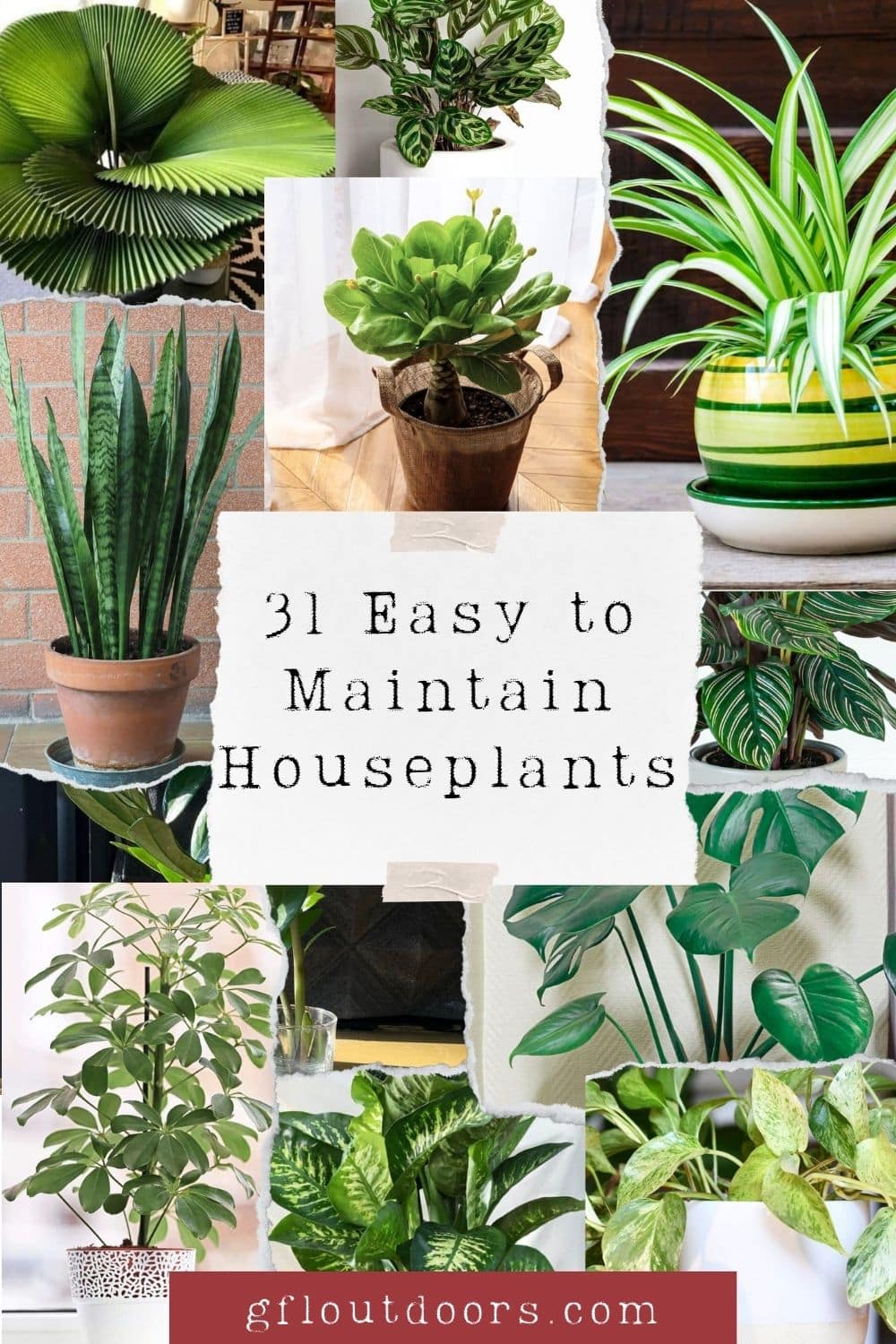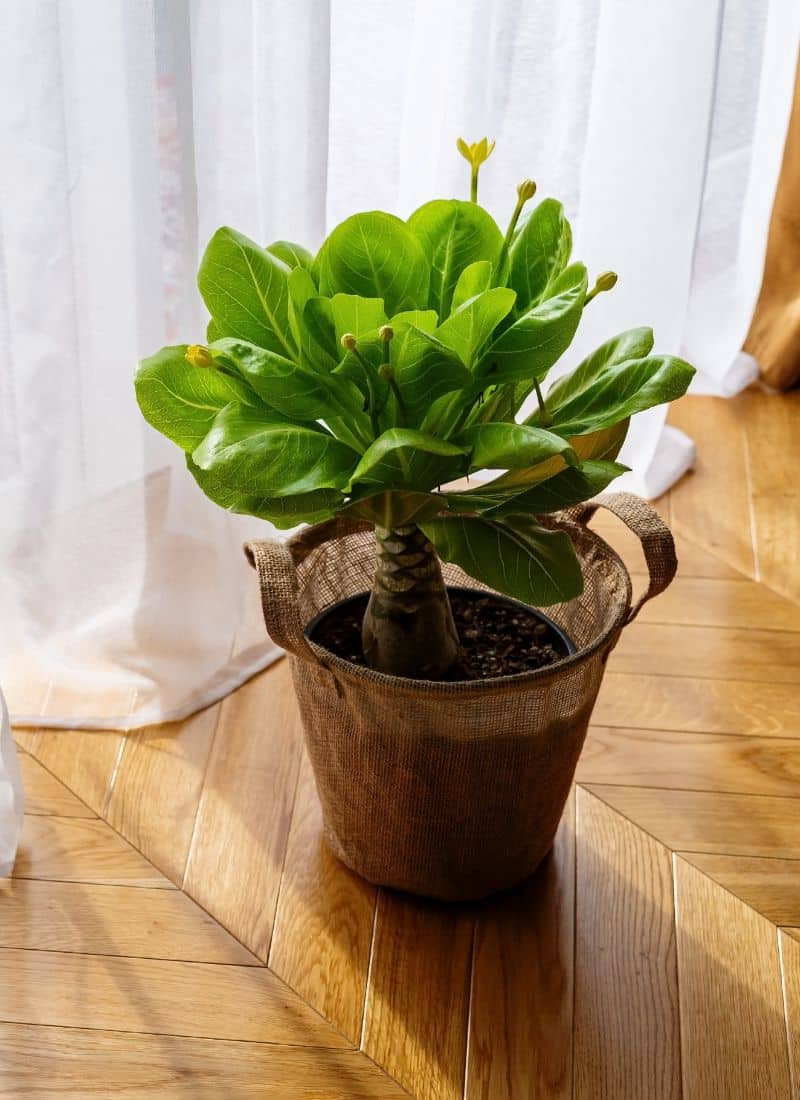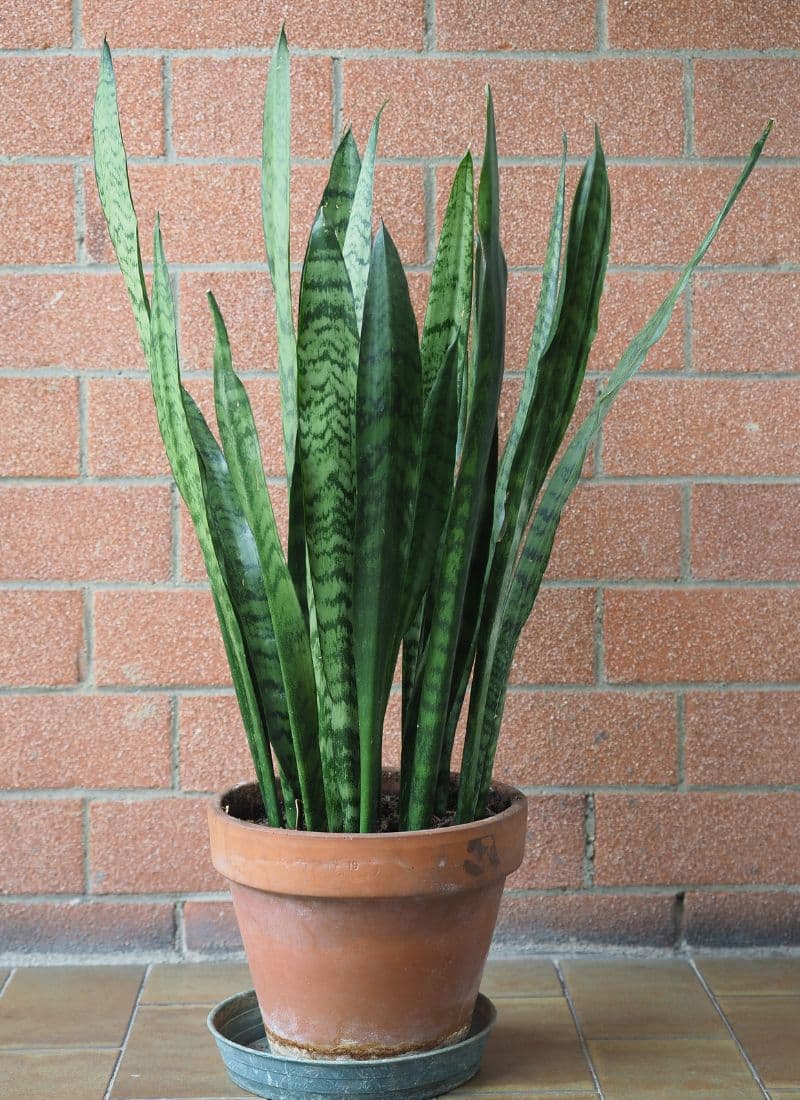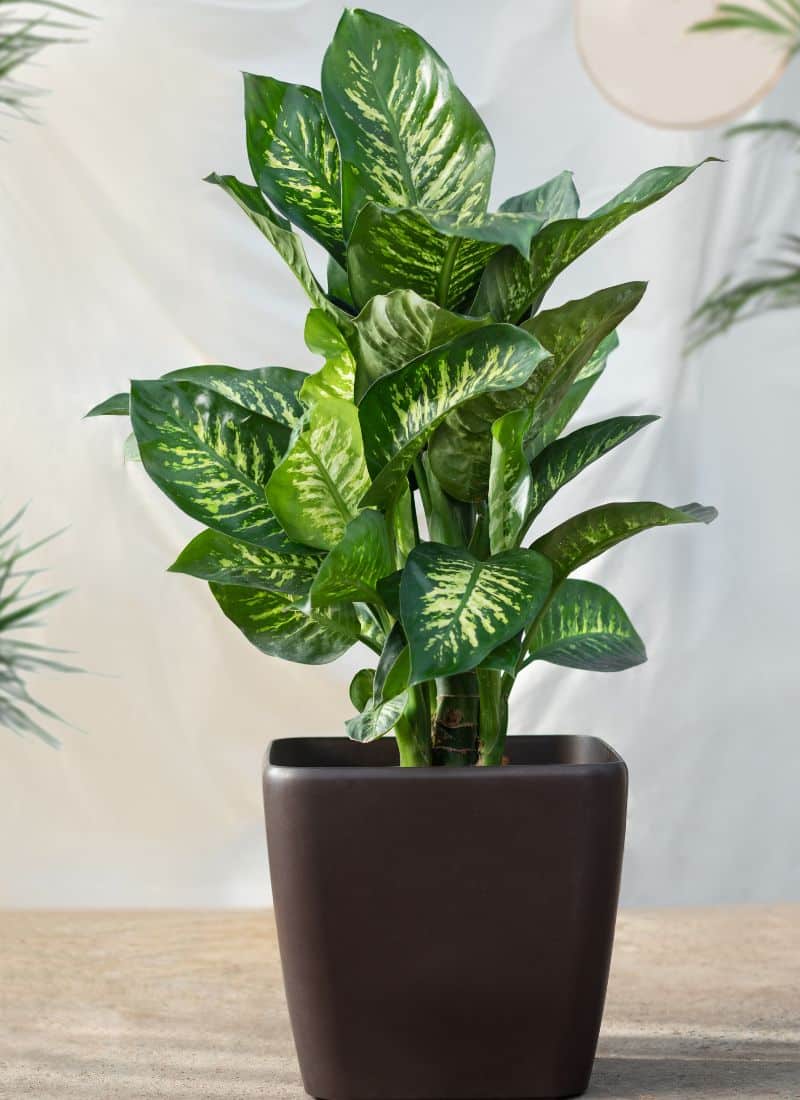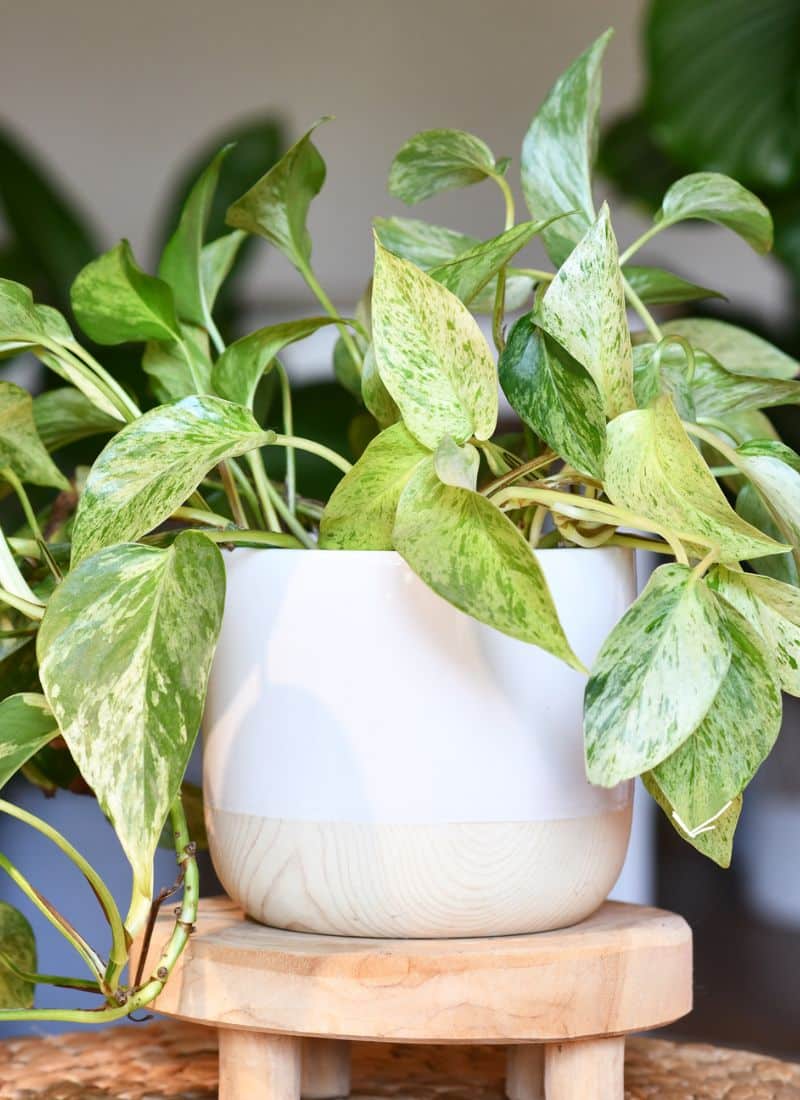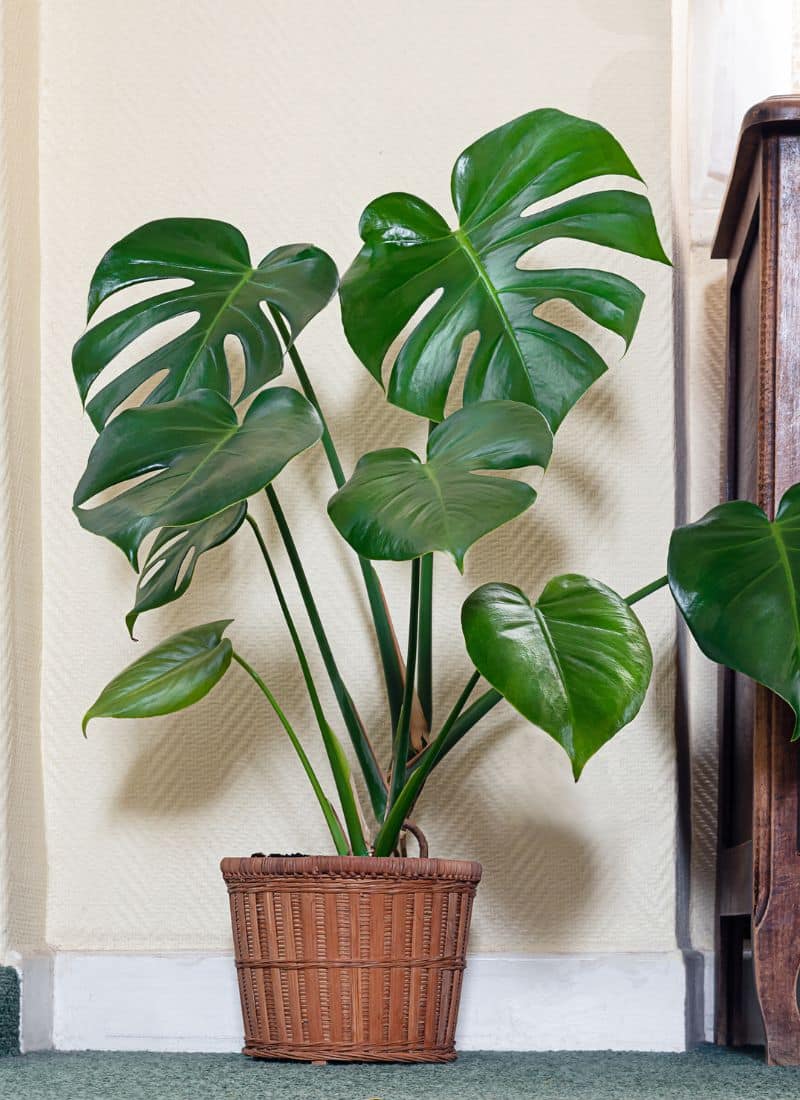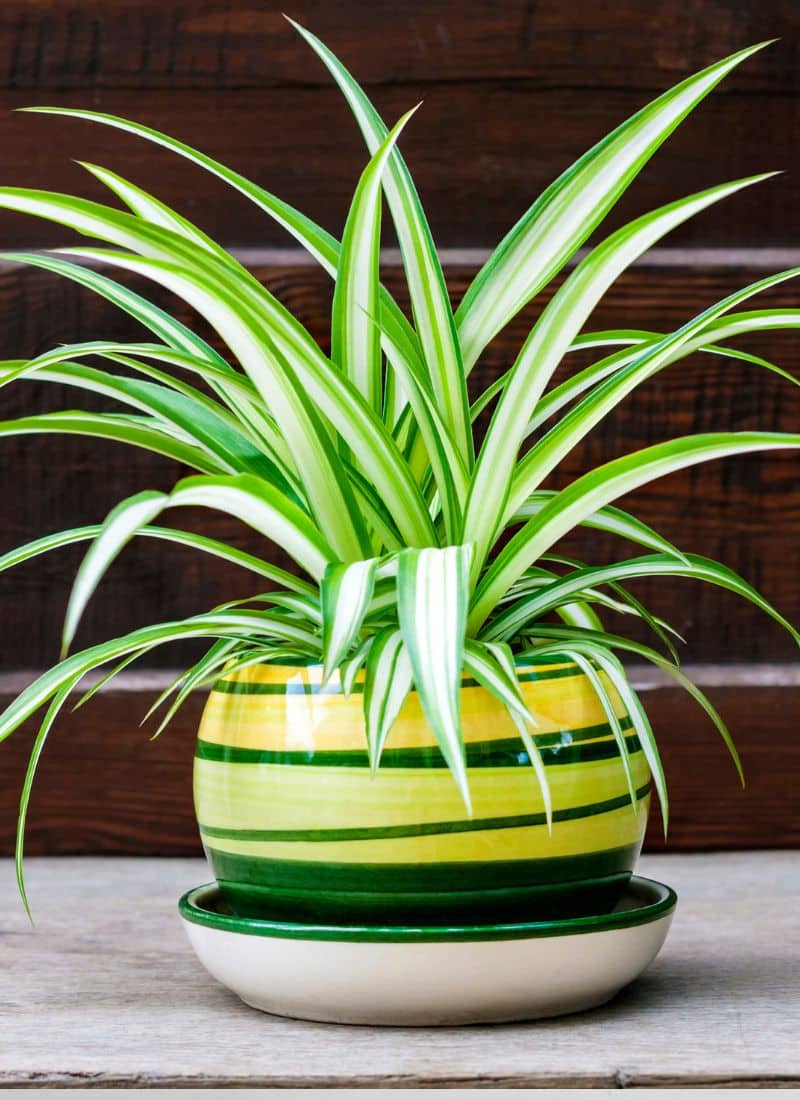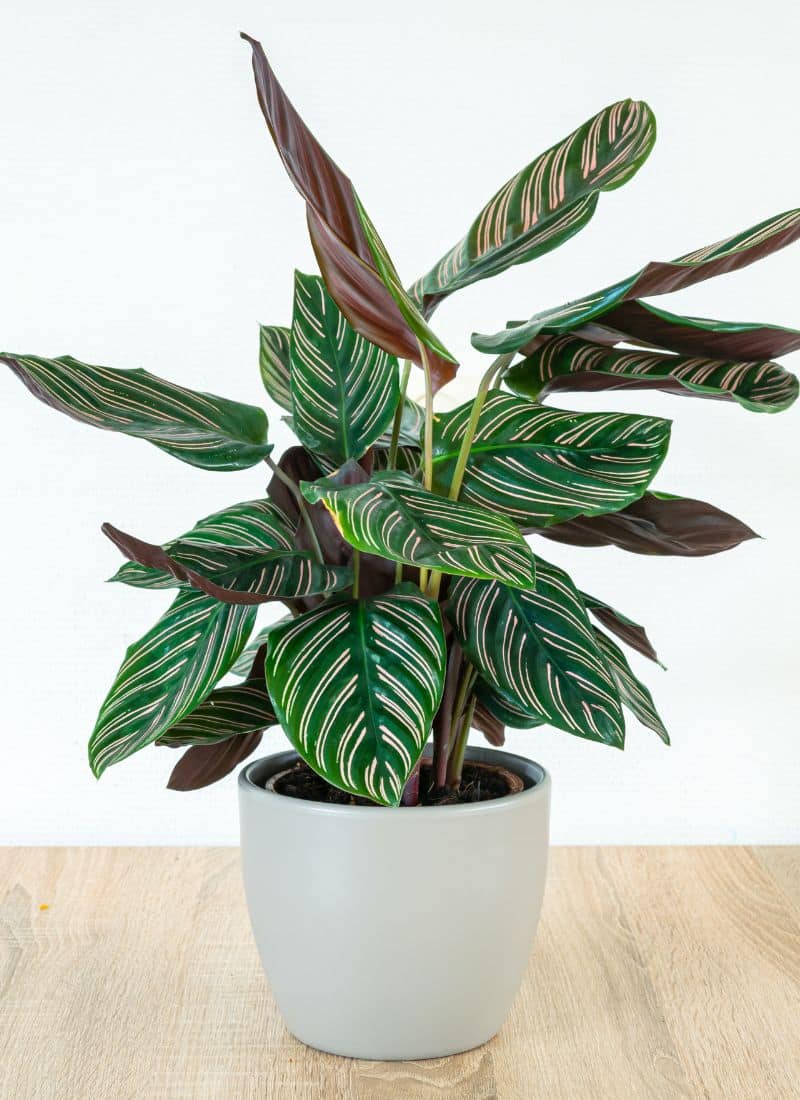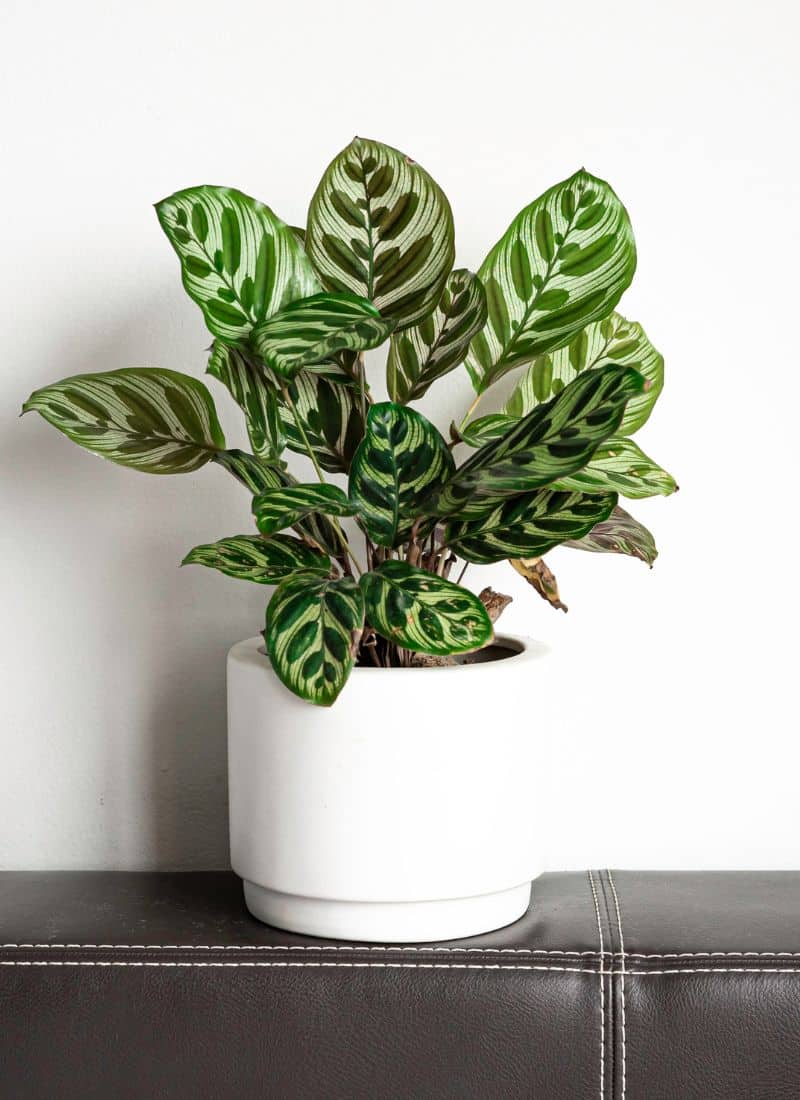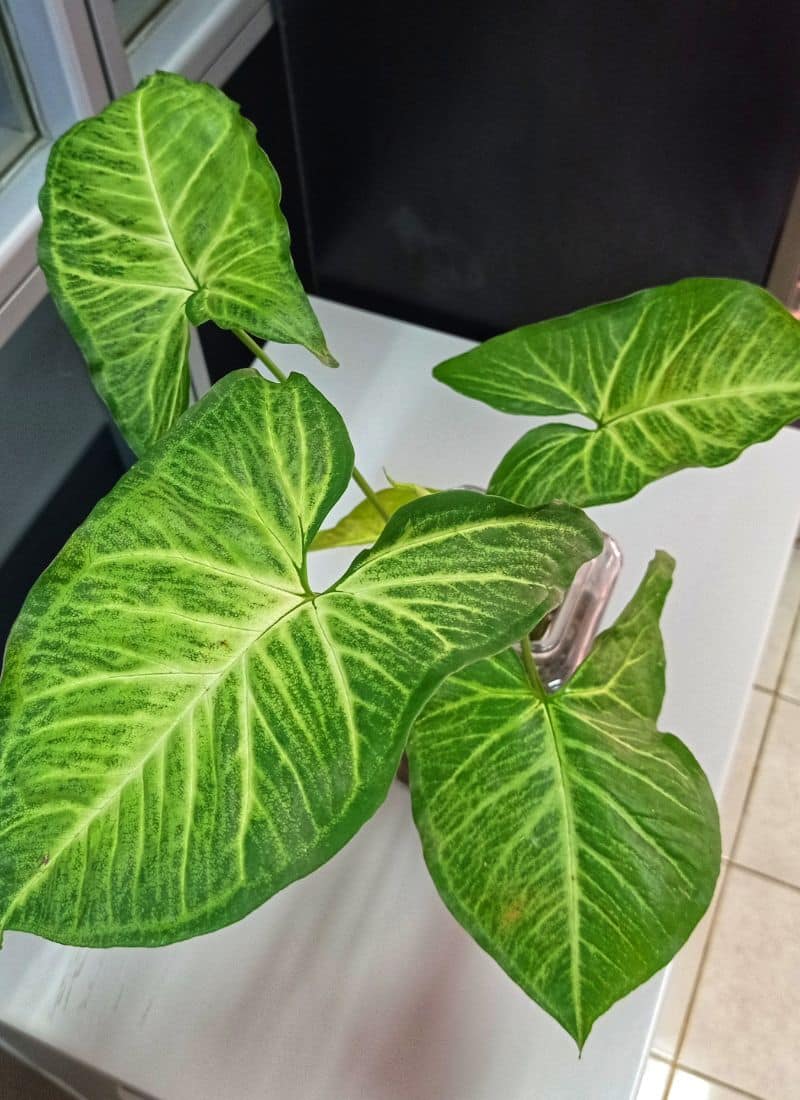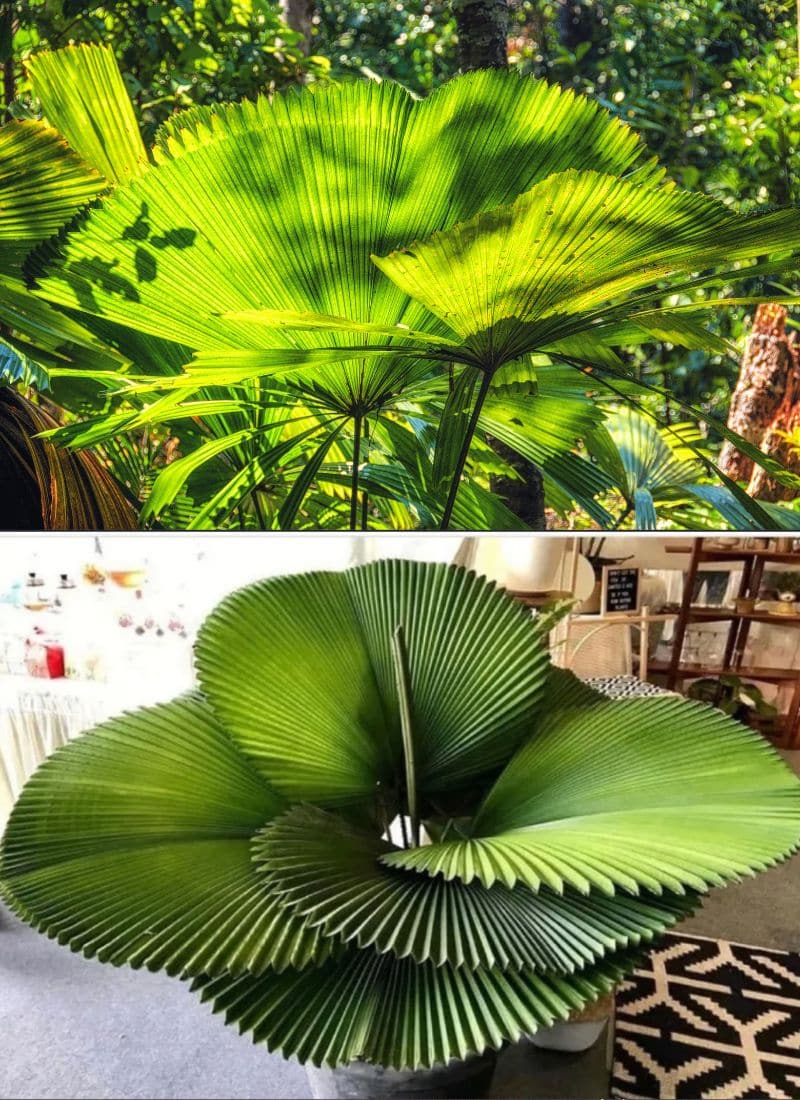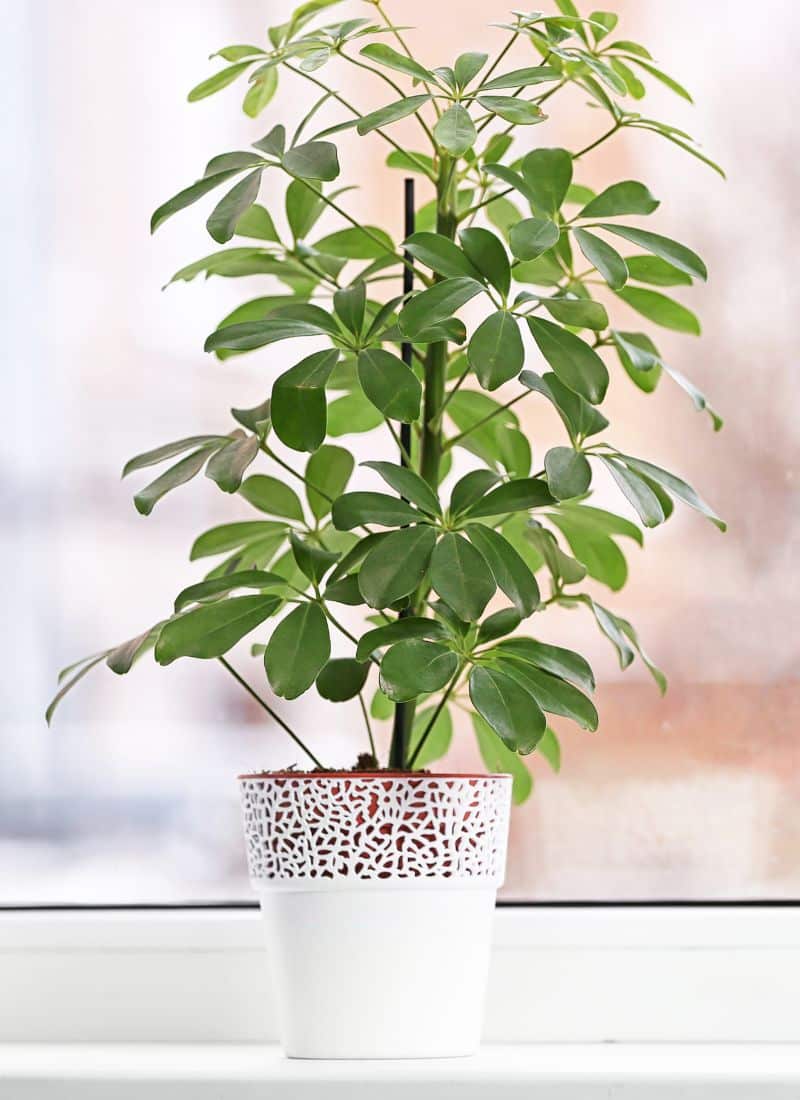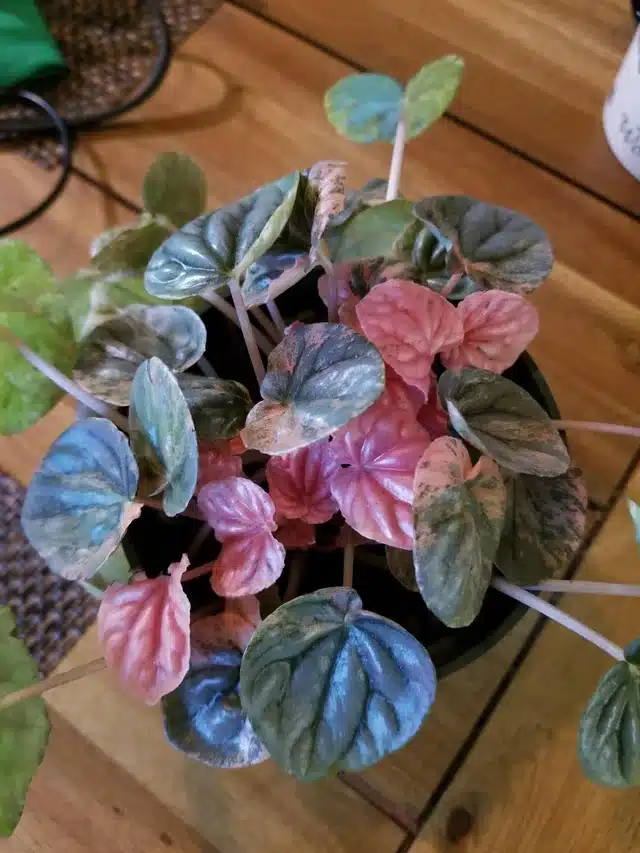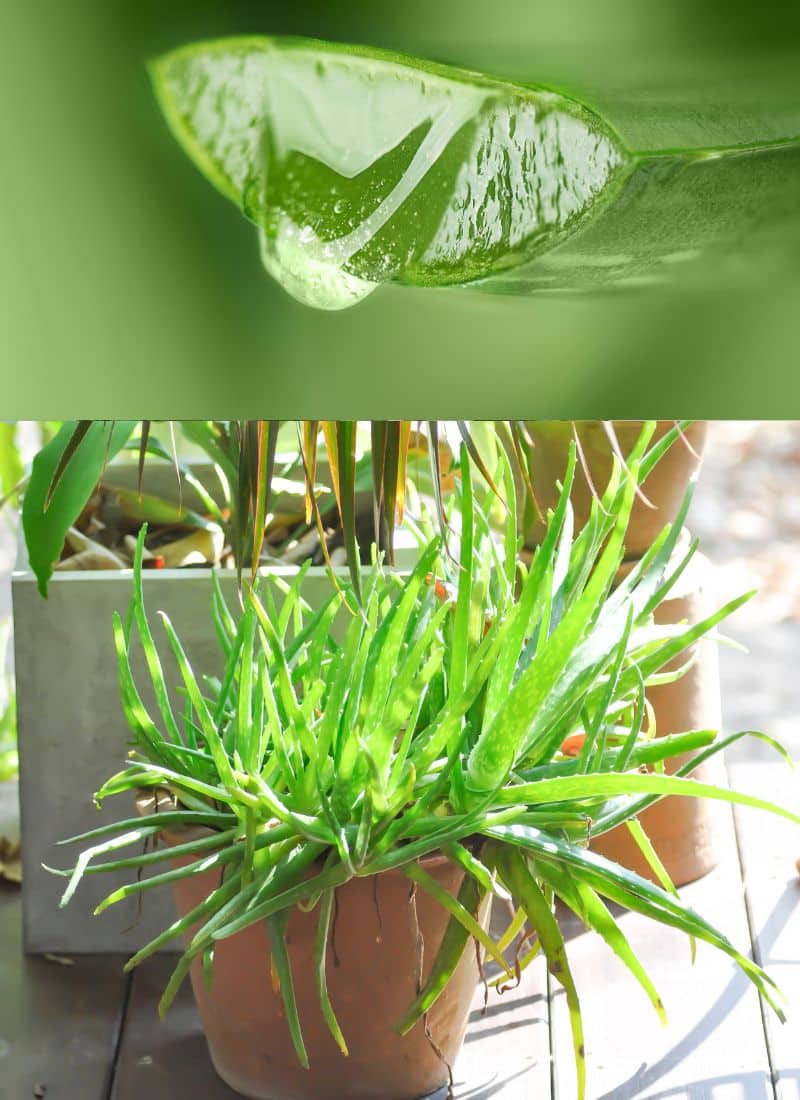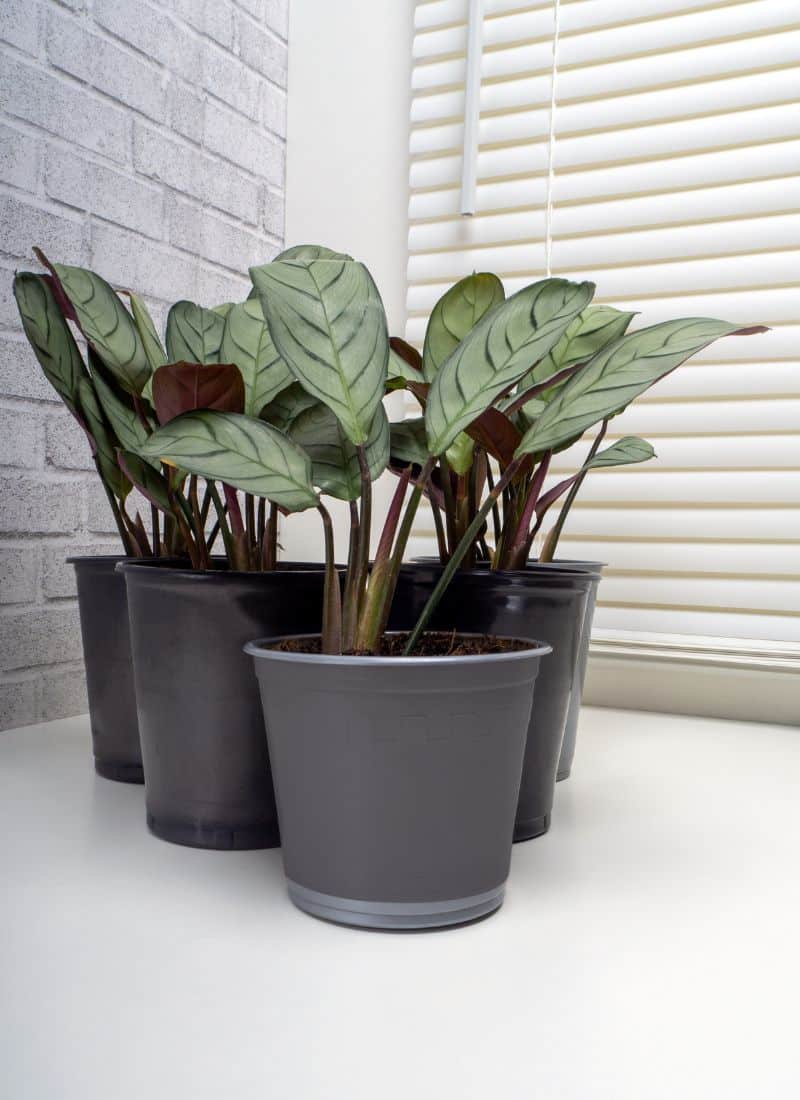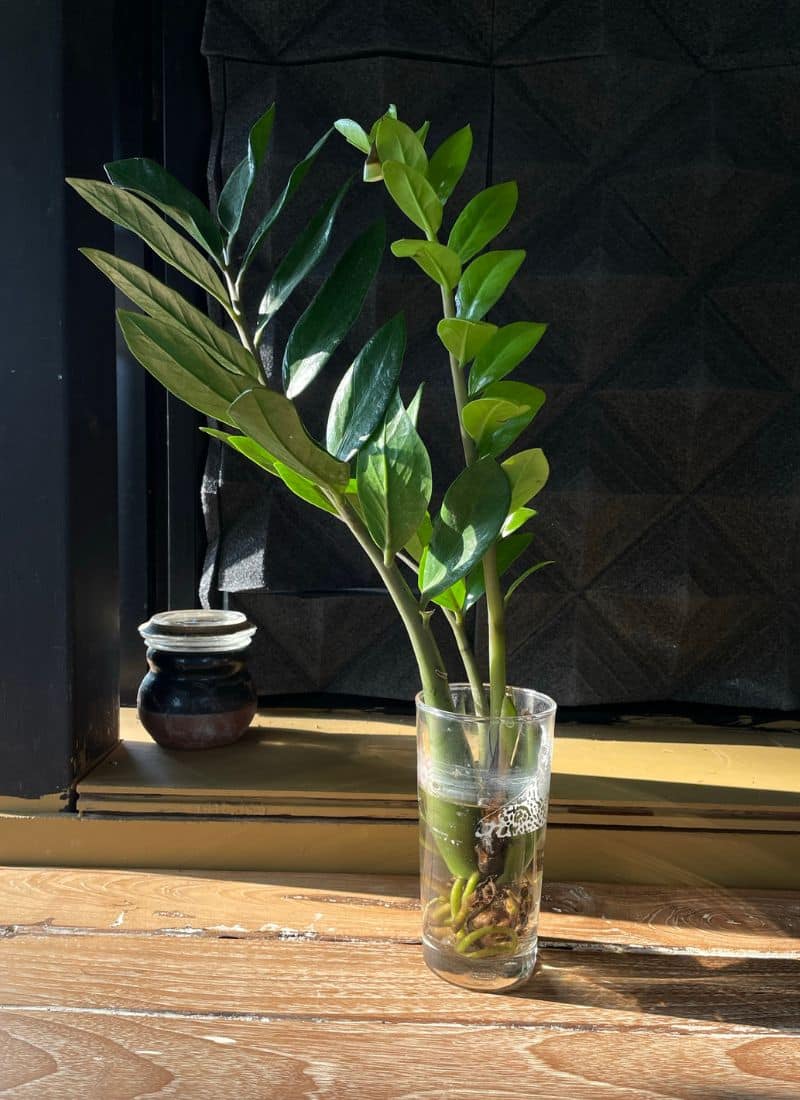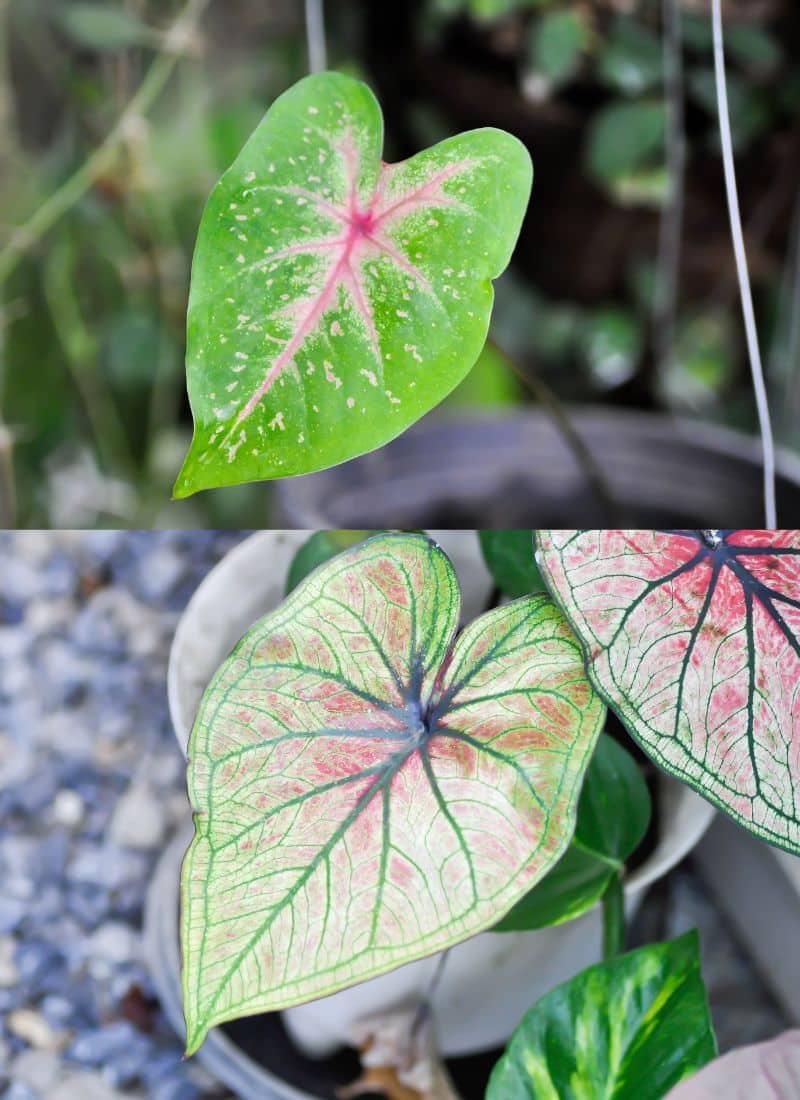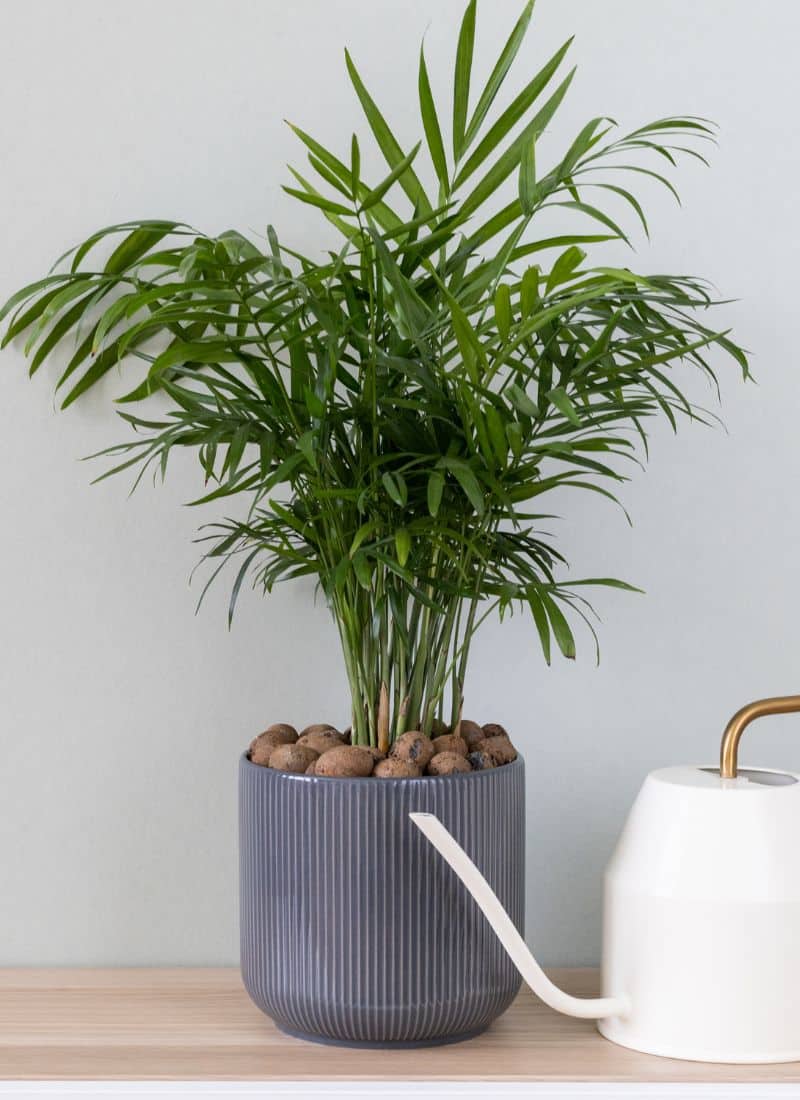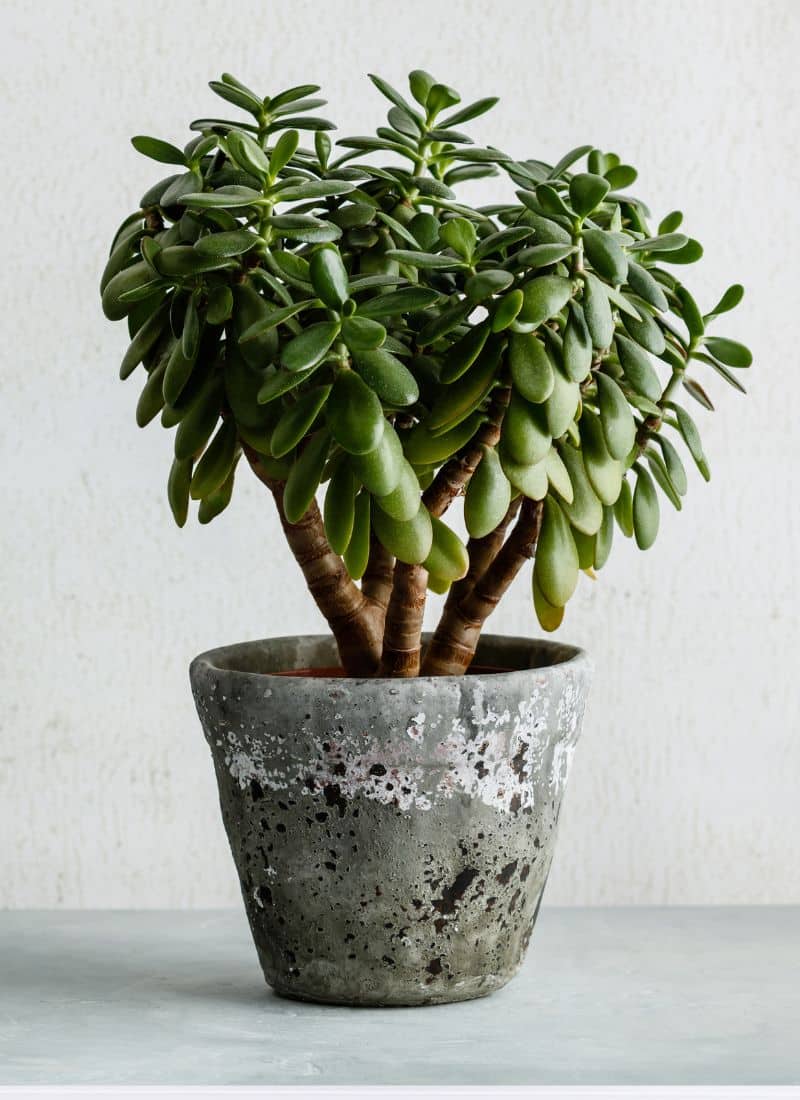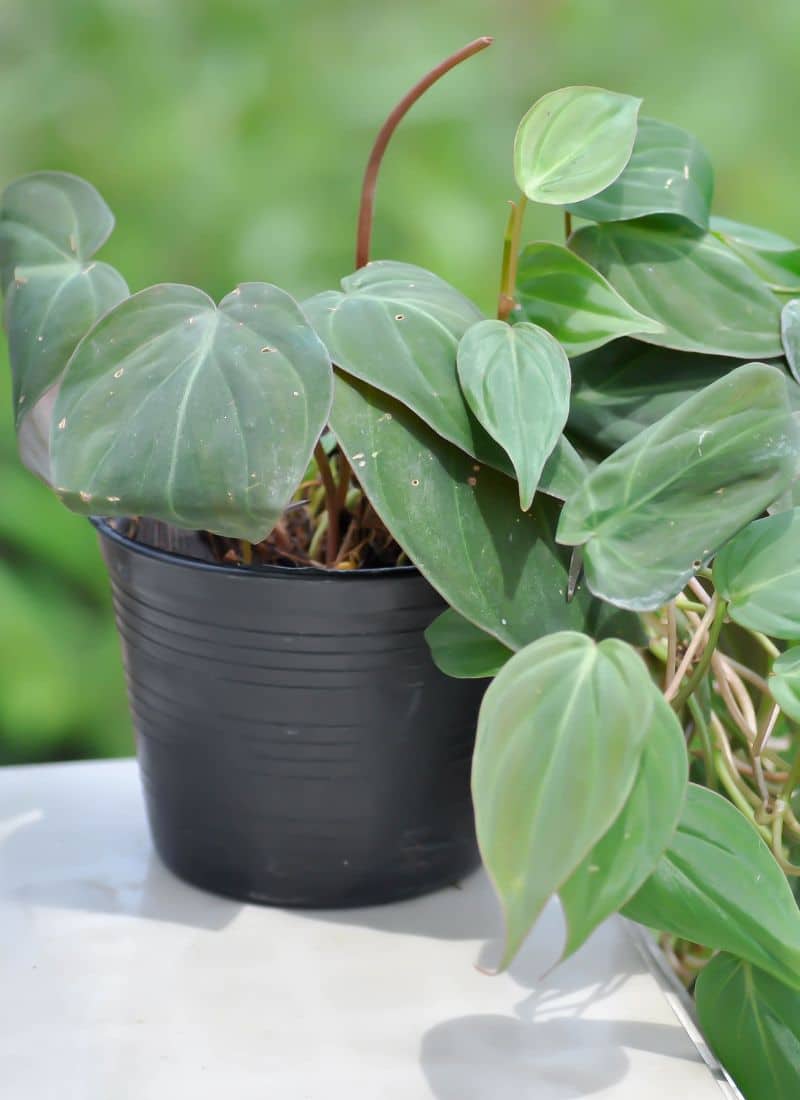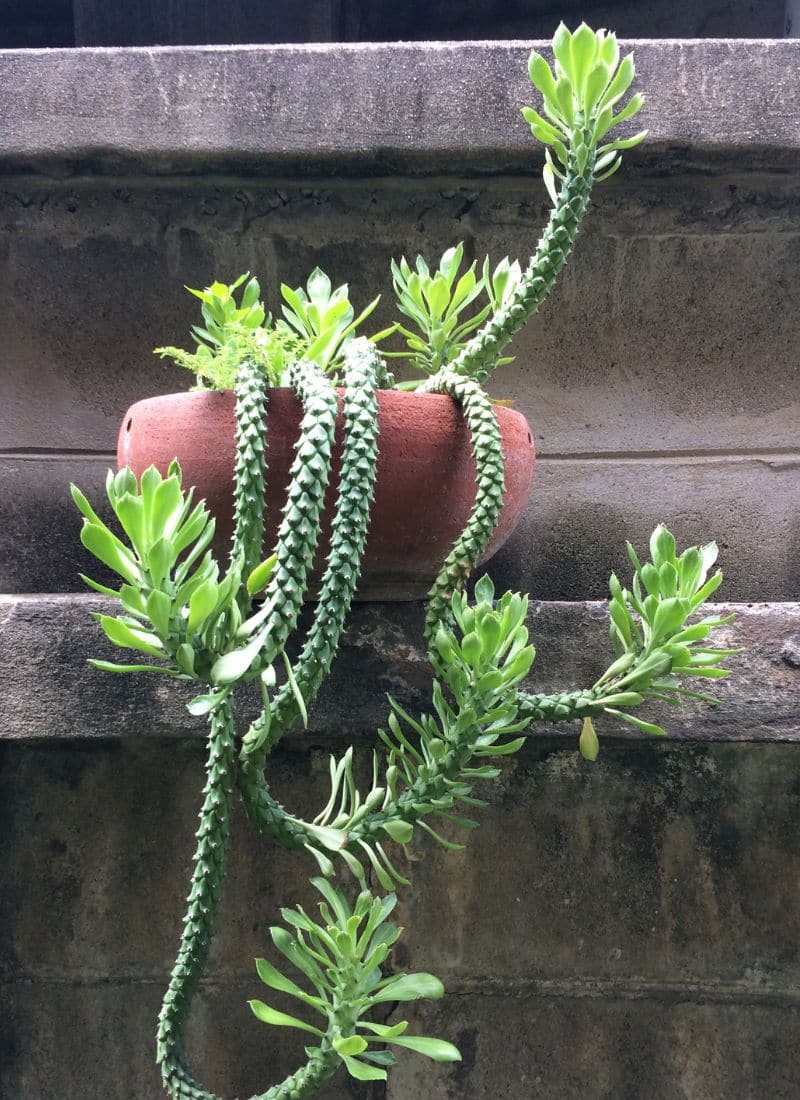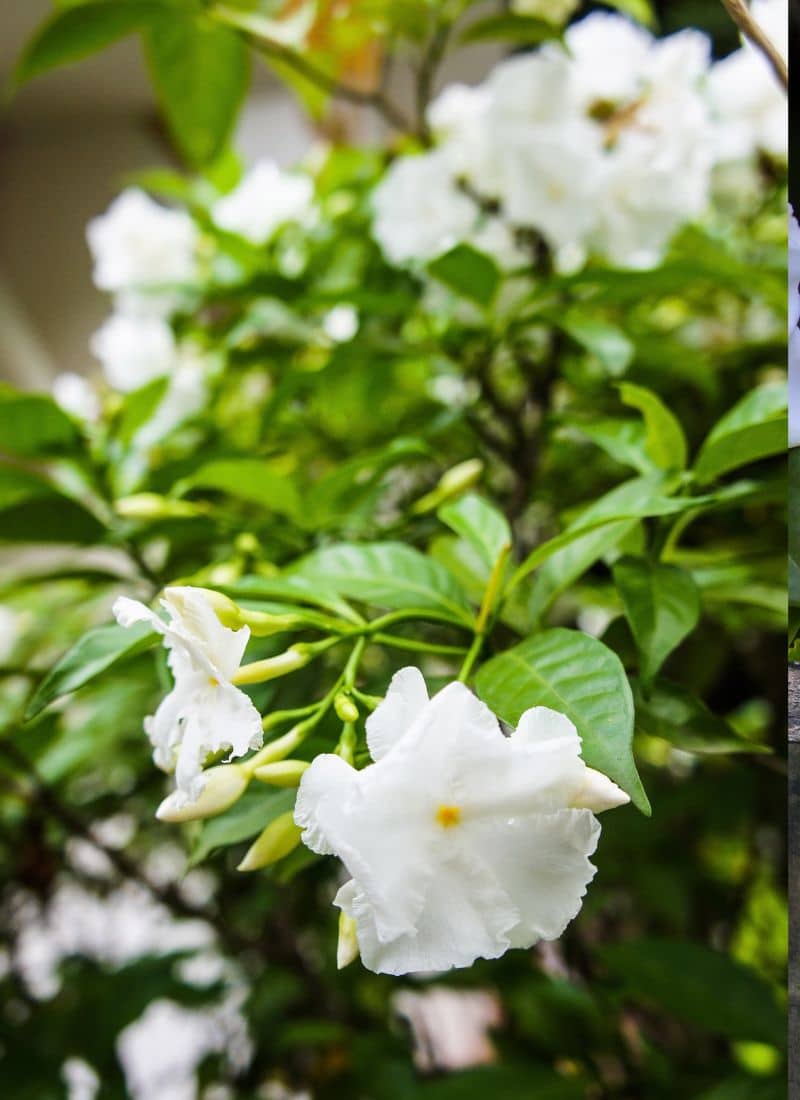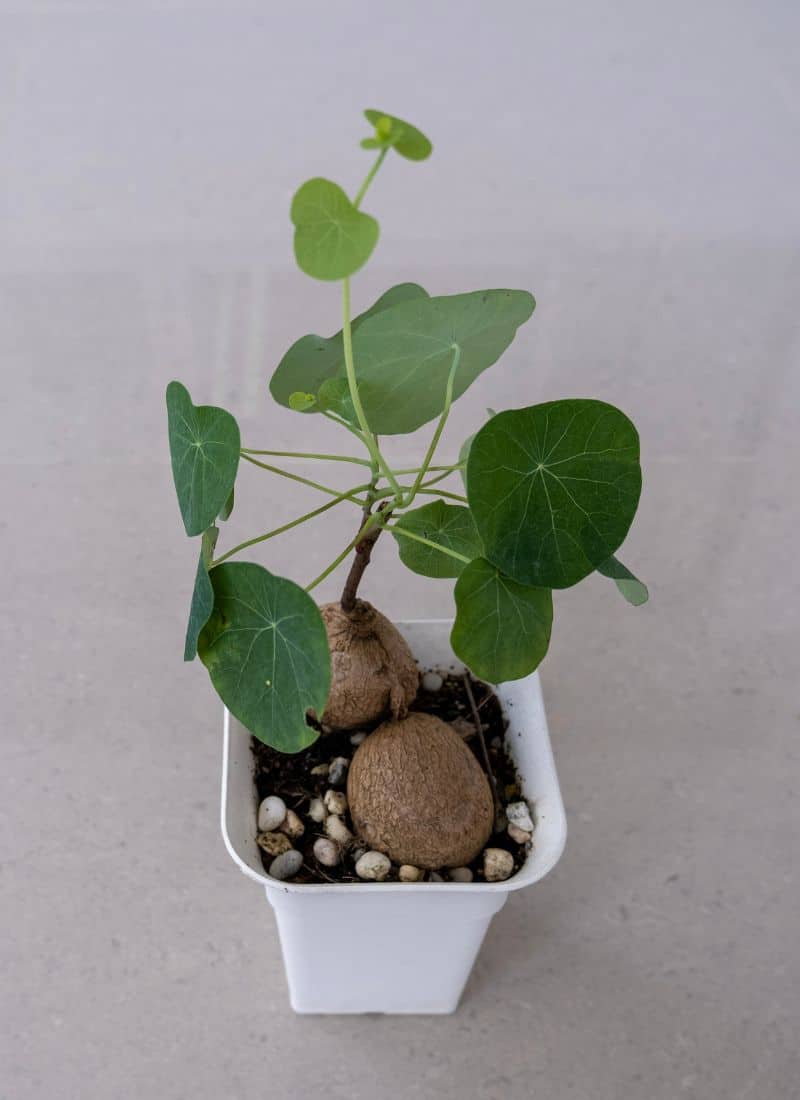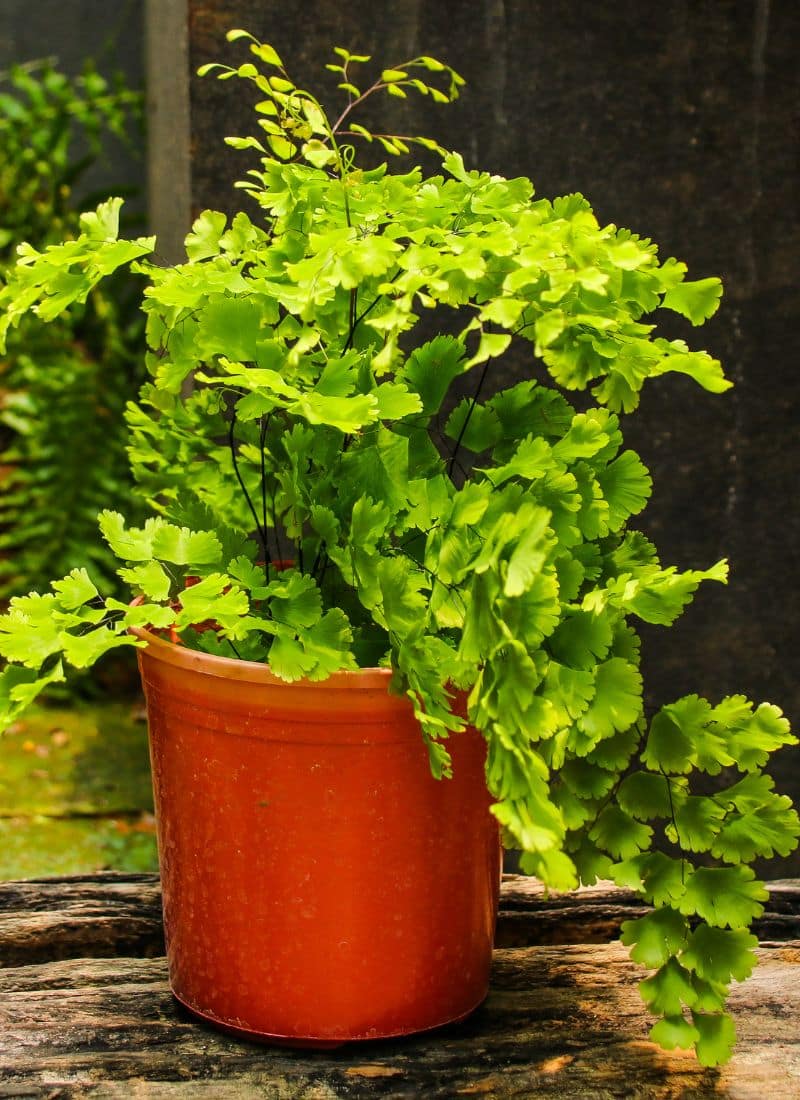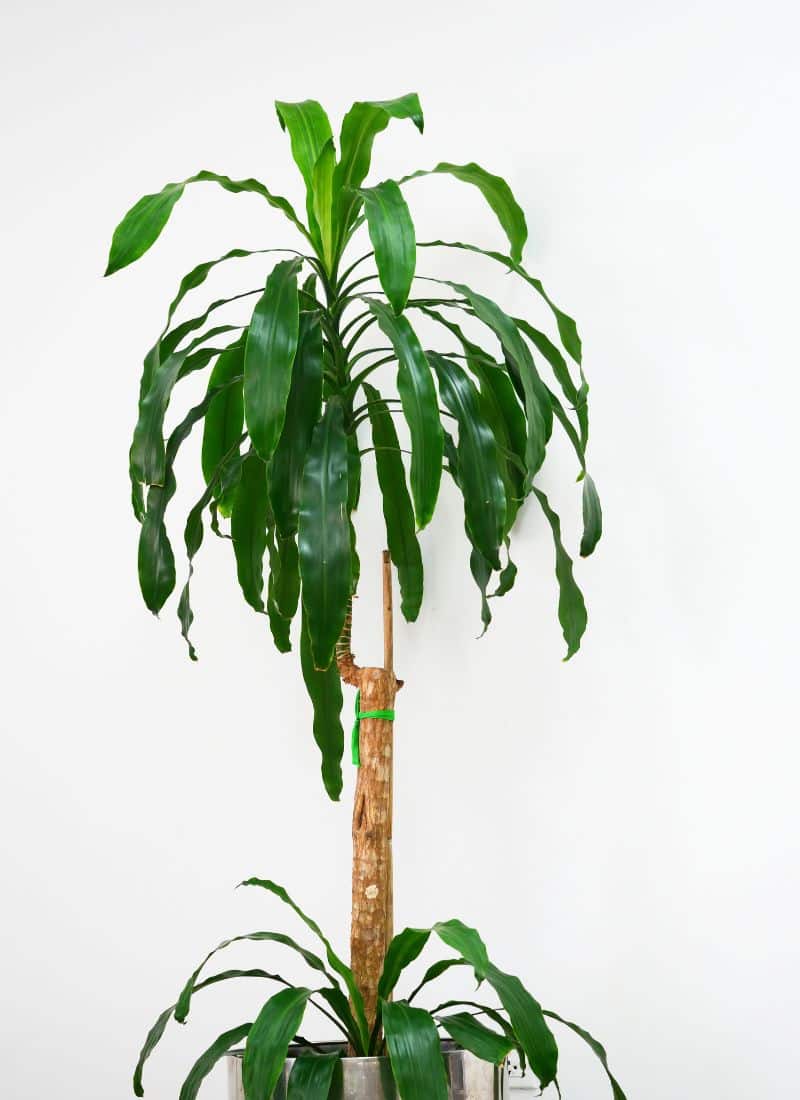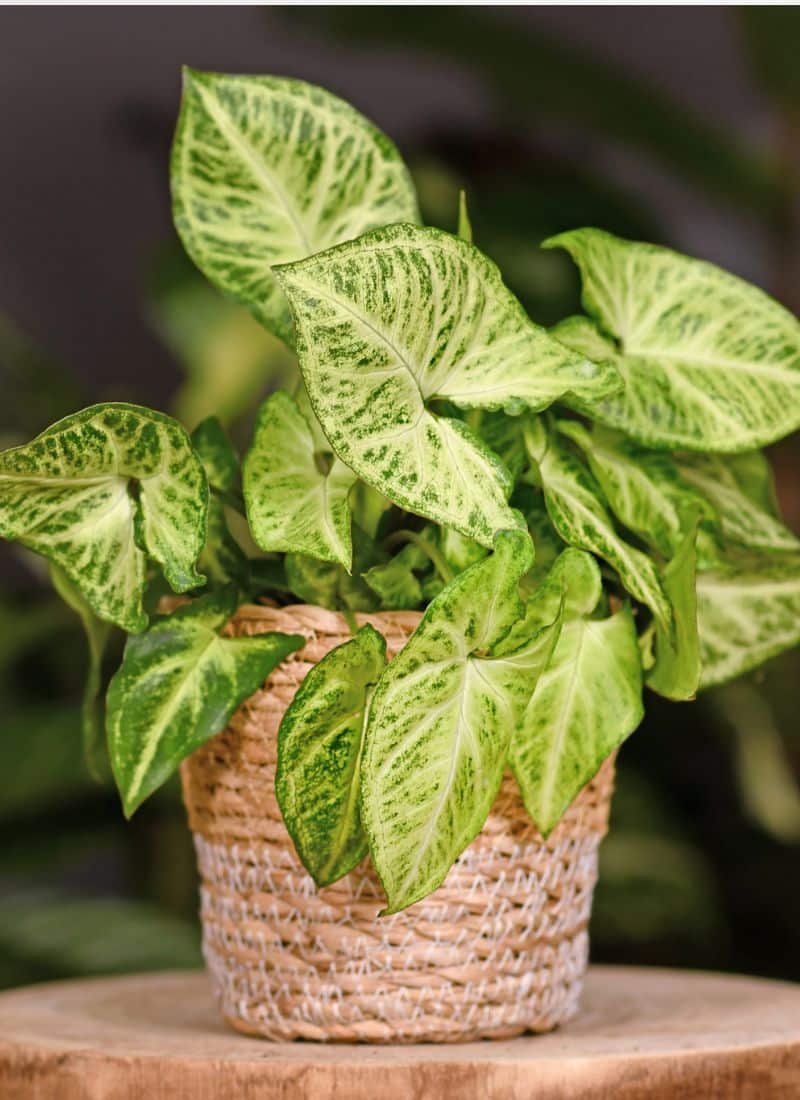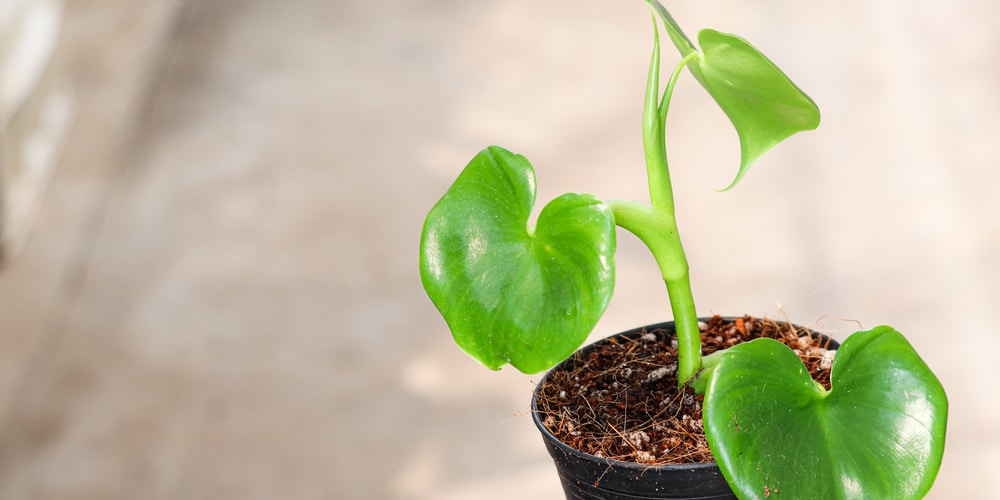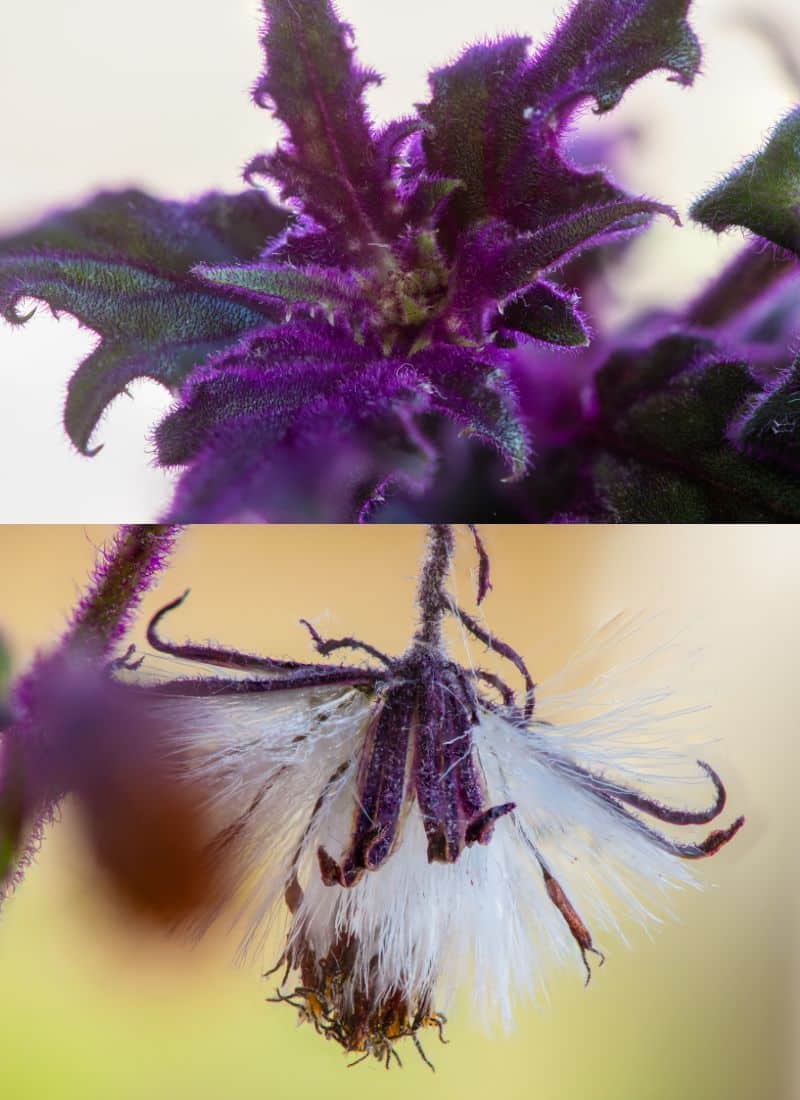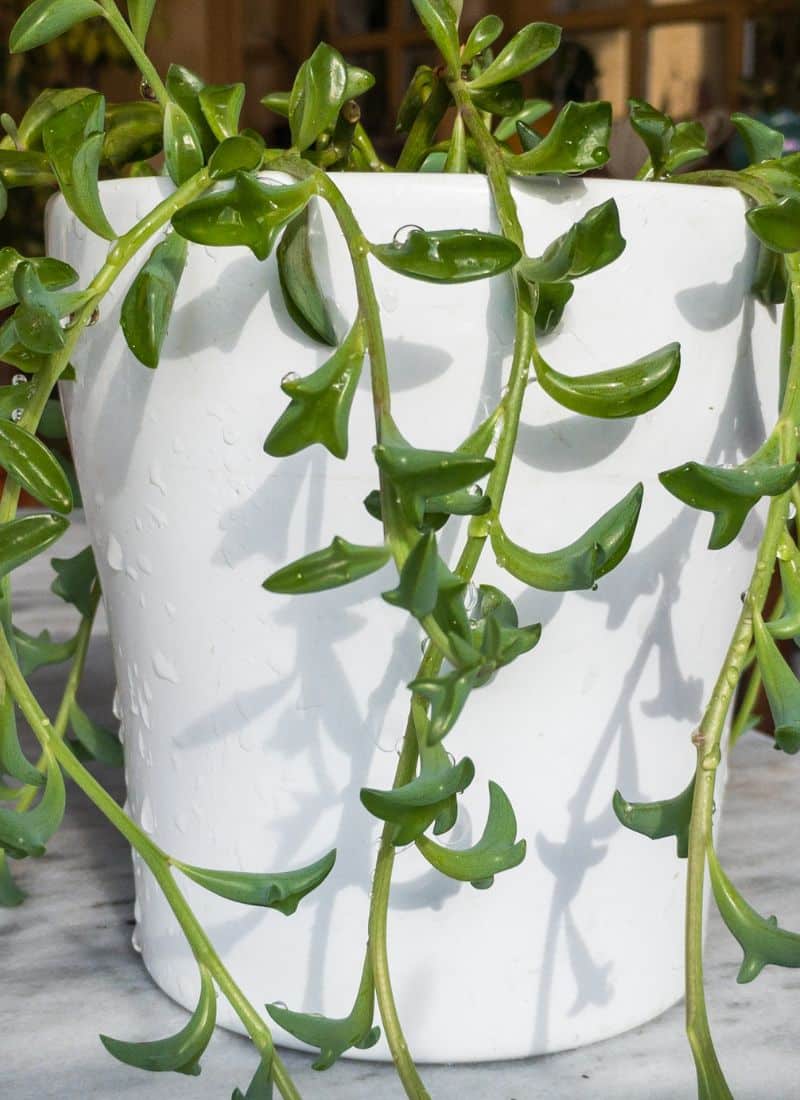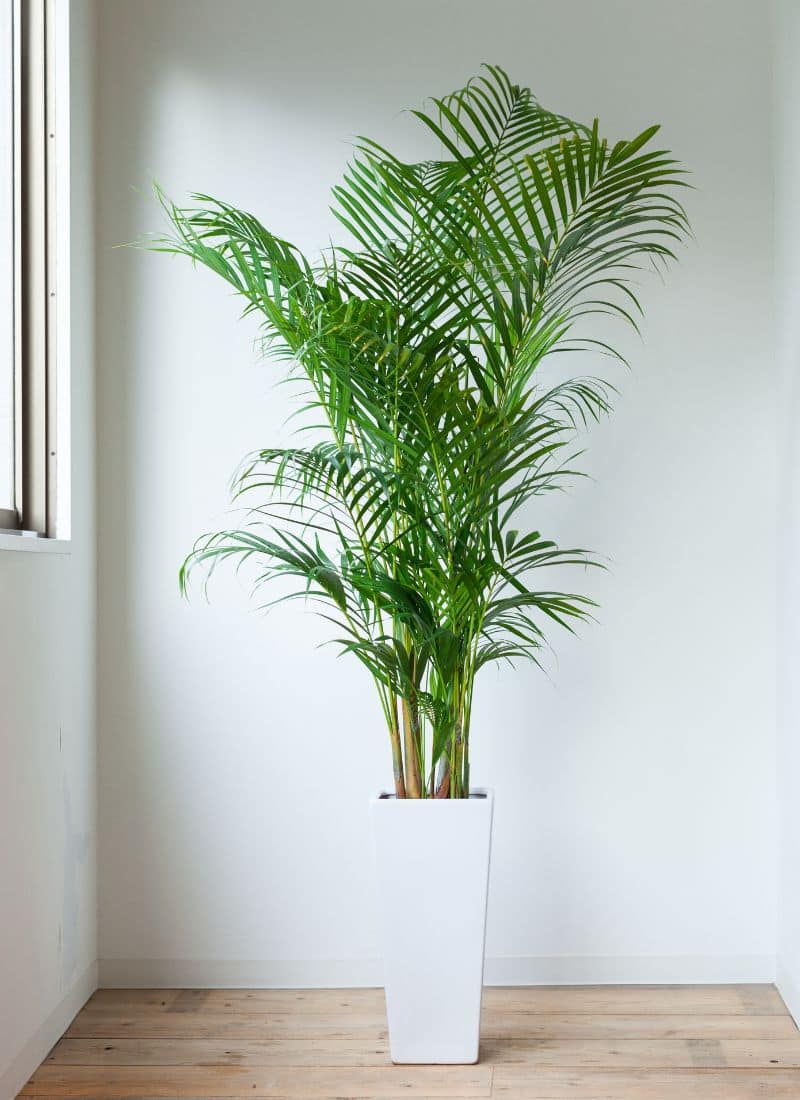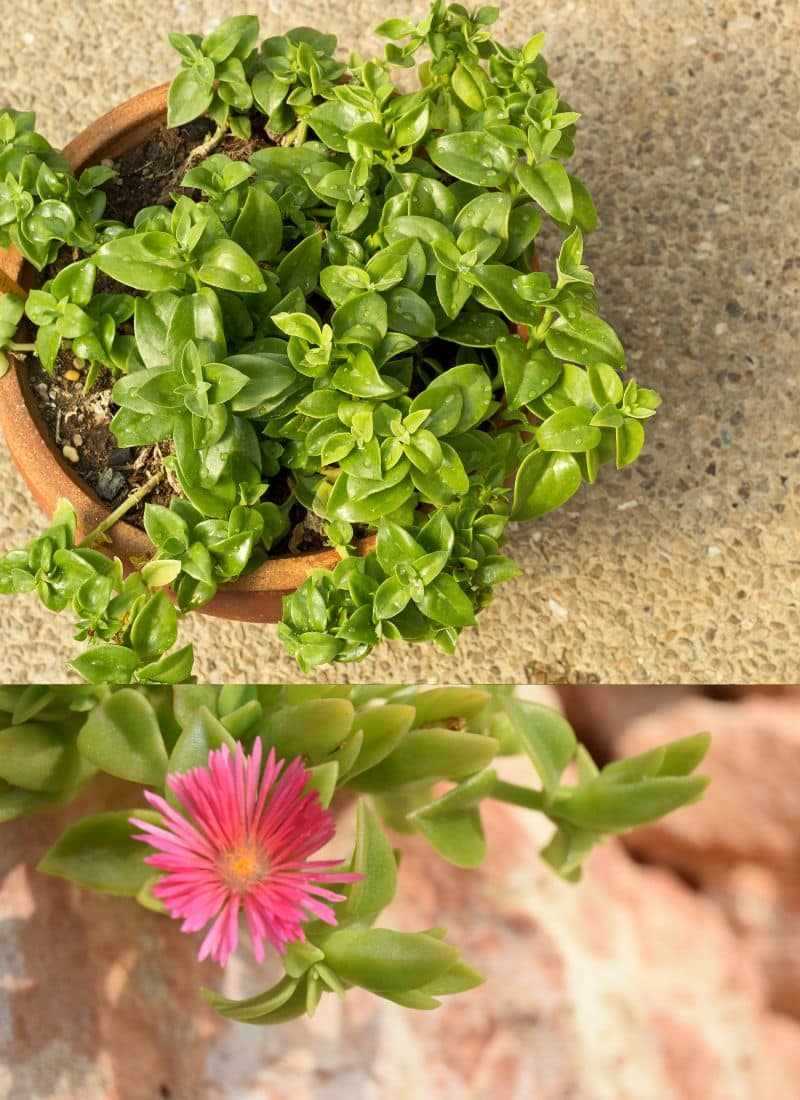Tired of watching your indoor plants meet an untimely end? It’s time to shake off that “black thumb” reputation with our help.
Dive into the world of low-maintenance houseplants that are not only easy to care for but also beautify your living space.
These resilient plants require little attention, making them perfect for anyone who doesn’t have the best track record with greenery.
Even if you’ve struggled with plants before, these hardy varieties are designed to thrive with minimal effort. They bring a lively touch to any room, promising to revitalise your home environment without demanding constant attention.
Ok. Why am I still writing this intro? Let’s get to it!
Brighamia Insignis (Hawaiian Palm, Alula)
The Brighamia Insignis, or Hawaiian Palm, is a rare and endangered plant native to Hawaii, characterized by its thick, succulent-like trunk and rosette of shiny green leaves.
This unique plant thrives in bright, indirect light and can tolerate some direct sunlight, making it well-suited for sunny indoor spaces.
Water every 2-3 weeks, allowing the soil to dry out between waterings, as it is drought-tolerant.
Plant it in well-draining soil, such as a cactus mix, to prevent waterlogging. Fertilize every 2-3 months with a succulent or general-purpose fertilizer during its active growing season.
With its striking appearance and low-maintenance care, the Hawaiian Palm brings a touch of the tropics to any collection.
Mother-In-Law’s Tongue (Sansevieria trifasciata)
The Mother-In-Law’s Tongue, also known as the Snake Plant, is one tough cookie. Its roots trace back to tropical West Africa, from Nigeria to the Congo.
This plant is very easy to look after, making it a favorite for busy people or those without green thumbs.
With long, sword-like leaves edged in lighter shades, it brightens up any room. For best results, place it in a sunny spot and water every 4-5 weeks.
The soil should mimic its natural sandy habitat, so a well-draining mix is ideal. Skip the fertilizer during the winter months to keep it healthy.
Plus, did you know that its fibers were used for making bowstrings?
Floriana Dieffenbachia Dumbcane (Dieffenbachia seguine)
This tropical beauty, hailing from the vibrant regions between Mexico and Argentina, brings a splash of nature into your home.
The leaves are marked with white spots and flecks, giving them a distinct appearance and a leathery texture.
Keep your plant in a bright spot, perhaps by a window with a sheer curtain, to protect it from direct sunlight which can harm the leaves.
When it comes to watering, about every two to three weeks should suffice. Help the plant thrive by using a liquid fertilizer every couple of months. These simple steps will keep your Dieffenbachia looking stunning and healthy.
Ivy Plant (Epipremnum aureum)
Water: Once a week
Light: Bright with partial shade
This tropical plant is not only strong but also serves as a natural air purifier. It has charming, heart-shaped leaves with a mix of green and gold.
Known scientifically as Epipremnum aureum, it belongs to the Araceae family and originally comes from Mo’orea, an island in French Polynesia.
While it’s a favorite as a houseplant in cooler places, it also thrives in wild tropical and subtropical forests. Often referred to as the money plant, it doesn’t bloom often unless special hormones are introduced. The last time it flowered on its own was back in 1964. Make sure to water it once a week.
Fruit Salad Plant (Monstera Deliciosa)
The Fruit Salad Plant, also known as Monstera Deliciosa, is a popular houseplant with large, eye-catching leaves that feature unique holes, similar to Swiss cheese.
Not only does it add a tropical vibe to any room, but its fruit also smells like a mix of pineapple and banana and is edible.
To keep your plant healthy, remember to water it when the soil feels dry. It thrives in bright areas with some shade to prevent leaf burn.
When you first bring it home, give it a thorough soak to help it settle. This plant can transform your living space while possibly even helping you unwind.
Spider Plant (Chlorophytum comosum)
The Spider Plant, native to tropical and southern Africa, is a classic favorite known for its arching green leaves with white stripes and its charming baby offshoots.
It thrives in bright, indirect light but is also highly adaptable to lower light conditions. Water every 1-2 weeks, letting the soil dry out slightly between waterings to keep it healthy and happy.
This resilient plant benefits from a liquid fertilizer every 4-6 weeks during the growing season. Place it in a hanging basket or on a shelf where its cascading foliage can shine.
The Spider Plant is not only low-maintenance but also excellent for improving indoor air quality!
Prayer Plant (Maranta leuconeura)
The Prayer Plant, native to the tropical forests of Brazil, is cherished for its vibrant, oval-shaped leaves with intricate patterns and its unique habit of folding its leaves upward at night, resembling hands in prayer.
It does best with bright, indirect light but can tolerate lower light conditions. Water every 1-2 weeks, keeping the soil consistently moist but not soggy.
This plant loves high humidity, making it ideal for bathrooms or rooms with a humidifier. Fertilize every 4-6 weeks with a balanced liquid fertilizer during the growing season.
Place it in a warm, humid environment with filtered light, and its fascinating foliage will be a lively addition to your space.
Calathea Exotica (Calathea elliptica)
The Calathea Exotica, a tropical beauty from South America, is celebrated for its striking green leaves with bold, silver-striped patterns.
This plant flourishes in filtered or dappled light, as too much direct sunlight can fade its vibrant foliage. Water every 1-2 weeks, ensuring the soil remains slightly moist without becoming waterlogged.
A fan of humidity, the Calathea Exotica thrives in environments like kitchens or bathrooms or near a humidifier.
Feed it with a diluted liquid fertilizer every 4-6 weeks during the growing season. Its stunning appearance and sensitivity to its surroundings make it a standout in any indoor collection.
Alocasia Frydek (Alocasia micholitziana ‘Frydek’)
This stunning tropical plant, native to Southeast Asia, is known for its velvety, dark green leaves with striking white veins, resembling an arrowhead.
It thrives in bright, indirect light, which helps maintain its vibrant foliage, but it should be kept out of direct sunlight to avoid leaf burn.
Water every 1-2 weeks, allowing the top inch of soil to dry out between waterings.
Alocasia Frydek prefers high humidity, making it an excellent choice for bathrooms or rooms with a humidifier.
Fertilize with a balanced liquid fertilizer every 4-6 weeks during the growing season to encourage healthy growth.
Place it in a warm spot with filtered light, and it will add a touch of elegance to any space.
Licuala Orbicularis (Licuala grandis)
The Licuala Orbicularis, also known as the fan palm, hails from Southeast Asia and is known for its magnificent, circular, pleated leaves that give it a truly exotic appearance.
This tropical treasure enjoys diffused light or partial shade, making it perfect for bright indoor spaces where direct sunlight is minimal.
Water once every 1-2 weeks, keeping the soil consistently moist but never soggy.
This palm thrives in high humidity and appreciates occasional misting or placement near a humidifier. Feed it with a balanced liquid fertilizer every 2-3 months to support its slow and steady growth. Its dramatic foliage adds an elegant, tropical touch to any room.
Amate Umbrella Tree (Schefflera amate)
The Amate Umbrella Tree, native to tropical rainforests, is admired for its large, glossy, and deep green leaves that create a lush, tropical vibe indoors.
This hardy plant thrives in bright, indirect light but can also tolerate some lower light conditions.
Water every 1-2 weeks, ensuring the top inch of soil dries out between waterings to prevent overwatering.
To keep it healthy and vibrant, fertilize with a balanced liquid fertilizer every 2-3 months during the growing season.
Place it in a warm, well-lit spot away from cold drafts. Its bold foliage and easy care make it a fantastic addition to any home or office setting.
Peperomia Pink Lady (Peperomia clusiifolia ‘Pink Lady’)
Peperomia Pink Lady, a delightful variety native to South America, is adored for its charming tri-colored foliage, blending shades of green, cream, and soft pink.
It prefers medium to bright indirect light, which helps maintain its vibrant colors, but can adapt to slightly lower light.
Water every 1-2 weeks, allowing the top inch of soil to dry out between waterings to avoid overwatering.
This compact plant thrives in average household humidity but appreciates occasional misting. Fertilize with a diluted liquid fertilizer every 4-6 weeks during the growing season.
Its compact size and striking appearance make it a lovely choice for desks, shelves, or small spaces.
Medicinal Aloe Vera (Aloe barbadensis miller)
A handy plant to have around…
The Medicinal Aloe Vera, native to the Arabian Peninsula, is famous for its fleshy, spiky leaves packed with soothing gel.
This resilient succulent thrives in bright, direct sunlight but can adapt to indirect light indoors. Water sparingly, about every 2-3 weeks, allowing the soil to dry out completely between waterings, as it stores water in its thick leaves.
Aloe Vera appreciates well-draining soil and occasional feeding with a succulent fertilizer every 2-3 months.
Its low-maintenance nature and therapeutic properties make it a popular choice for both decorative and functional use in households.
Grey Star (Ctenanthe setosa ‘Grey Star’)
The Grey Star, a native of the tropical regions of Brazil, stands out with its elegant, elongated silver-green leaves accented by bold dark green veins.
This plant loves bright, indirect light but can also tolerate partial shade, making it a versatile addition to indoor spaces.
Water every 1-2 weeks, keeping the soil slightly moist but ensuring good drainage to prevent sogginess.
High humidity keeps its leaves looking their best, so consider placing it in a humid room or misting occasionally.
Fertilize every 4-6 weeks with a balanced liquid fertilizer during its growing season. The Grey Star adds a refined, tropical charm to any home.
Zanzibar Gem (Zamioculcas zamiifolia)
The Zanzibar Gem is a low-maintenance tropical plant native to Eastern Africa, prized for its glossy, dark green leaves and ability to thrive in low light conditions.
It’s perfect for busy plant owners, as it requires watering only every 2-3 weeks, allowing the soil to dry out completely between waterings.
This resilient plant tolerates low to bright indirect light, making it suitable for almost any indoor location.
Fertilize sparingly, about every 2-3 months, using a liquid fertilizer to support its slow but steady growth. Its robust nature and striking appearance make it an excellent choice for homes or offices.
Caladium (Caladium bicolor)
The Caladium, native to the tropical forests of Central and South America, is celebrated for its heart-shaped, colorful leaves that come in striking combinations of green, pink, red, and white.
This vibrant plant thrives in bright, indirect light, though it can handle partial shade, especially outdoors.
Water every 1-2 weeks, keeping the soil evenly moist but not soggy during its growing season.
Caladiums appreciate high humidity and perform best in warm environments. Fertilize every 4-6 weeks with a balanced liquid fertilizer to encourage their dramatic foliage.
Whether potted indoors or planted outdoors in the summer, these dazzling plants bring a burst of color to any space.
Chamaedorea elegans (Parlor Palm)
The Parlor Palm, native to the rainforests of Central America, is a graceful, low-maintenance plant known for its feathery fronds and compact size, making it perfect for indoor spaces.
It thrives in medium to low indirect light and does best when shielded from direct sunlight, which can scorch its delicate leaves.
Water every 1-2 weeks, allowing the soil to dry slightly between waterings.
This palm enjoys higher humidity but adapts well to typical household conditions. Feed it with a diluted liquid fertilizer every 4-6 weeks during the growing season to promote lush growth.
With its classic charm and ability to purify air, the Parlor Palm is a timeless favorite for homes and offices alike.
Jade Tree (Crassula ovata)
The Jade Tree, also known as the Money Plant, is a beloved succulent native to South Africa and Mozambique.
It features thick, glossy, oval-shaped leaves and a tree-like structure that makes it a striking addition to any indoor collection.
This plant thrives in bright, indirect light but can tolerate some direct sunlight. Water every 2-3 weeks, allowing the soil to dry completely between waterings to prevent root rot.
Well-draining soil is essential, and a cactus or succulent mix works best. Fertilize every 2-3 months during the growing season with a balanced, diluted fertilizer.
With its easy care and long life, the Jade Tree is often seen as a symbol of good luck and prosperity.
Philodendron Melanochrysum (Philodendron melanochrysum)
The Philodendron Melanochrysum, native to the rainforests of Colombia and Ecuador, is renowned for its velvety, dark green leaves with golden undertones and pale veining.
This climbing aroid thrives in bright, indirect light, which enhances its leaf coloration and growth. Water every 1-2 weeks, allowing the top inch of soil to dry out between waterings, as it prefers slightly moist but well-draining soil.
This plant loves humidity and warm temperatures, making it a great candidate for humid rooms or near a humidifier.
Fertilize every 4-6 weeks with a balanced liquid fertilizer during the growing season. With its luxurious foliage and climbing nature, the Philodendron Melanochrysum is a stunning centerpiece for plant enthusiasts.
Rattail Cactus (Aporocactus flagelliformis)
The Rattail Cactus, native to Mexico, is a unique and striking plant known for its long, trailing stems covered in fine, hair-like spines.
This sun-loving cactus thrives in bright, direct light and can also adapt to partial sunlight in indoor settings.
Water sparingly, about every 2-3 weeks, letting the soil dry out completely between waterings, as it is highly drought-tolerant.
Plant it in well-draining cactus soil and ensure its pot has proper drainage. Fertilize with a cactus fertilizer every 2-3 months during the growing season to encourage vibrant blooms. Perfect for hanging baskets, the Rattail Cactus adds a dynamic, cascading feature to your home or garden.
Gardenia (Gardenia jasminoides)
The Gardenia, native to tropical and subtropical regions of Asia, is cherished for its glossy, dark green leaves and fragrant white blooms.
This elegant plant thrives in bright, indirect light, although it can tolerate some direct morning sunlight. Water every 1-2 weeks, keeping the soil consistently moist but never soggy, as it is sensitive to both overwatering and drying out.
Gardenias prefer high humidity and acidic, well-draining soil. To promote healthy growth and blooming, fertilize every 4-6 weeks with an acid-loving plant fertilizer. With its intoxicating fragrance and classic beauty, the Gardenia is a timeless favorite for indoor and outdoor spaces.
Stephania Erecta (Stephania erecta)
The Stephania Erecta, a unique and decorative caudiciform plant native to Southeast Asia, is known for its round, woody tuber and delicate vine-like foliage.
This intriguing plant prefers bright, indirect light, replicating its natural understory environment, and should be shielded from harsh direct sunlight.
Water sparingly, about every 2-3 weeks, allowing the soil to dry out completely before rewatering, as its tuber stores moisture.
Plant it in well-draining soil, and ensure its container has good drainage. Feed it with a diluted liquid fertilizer every 4-6 weeks during the growing season to encourage healthy vine growth.
Its unusual appearance and low-maintenance care make the Stephania Erecta a standout in any plant collection.
Maidenhair Fern (Adiantum spp.)
The Maidenhair Fern, native to tropical and temperate regions around the world, is prized for its delicate, fan-shaped fronds and fine black stems.
This elegant plant thrives in bright, indirect light but should be kept away from harsh direct sunlight, which can scorch its foliage.
Water every 1-2 weeks, keeping the soil consistently moist but ensuring it never becomes waterlogged.
Maidenhair Ferns love high humidity, making them ideal for bathrooms or rooms with a humidifier.
Fertilize with a diluted liquid fertilizer every 4-6 weeks during the growing season to promote lush growth. Their graceful appearance makes them a timeless favorite for adding soft greenery to indoor spaces.
Dracaena Fragrans (Dracaena fragrans)
The Dracaena Fragrans, also known as the Corn Plant, hails from tropical Africa and is loved for its broad, arching leaves and low-maintenance nature.
This plant thrives in medium to bright indirect light, though it tolerates lower light conditions, making it versatile for various indoor spaces.
Water every 2-3 weeks, allowing the top few inches of soil to dry out between waterings to prevent root rot.
This hardy plant prefers average household humidity and can adapt to most indoor environments.
Feed it with a diluted liquid fertilizer every 4-6 weeks during the growing season. Its lush foliage and air-purifying qualities make it an excellent choice for both homes and offices.
Syngonium Podophyllum (Arrowhead Plant)
The Syngonium Podophyllum, commonly called the Arrowhead Plant, is native to Central and South America and is celebrated for its arrow-shaped leaves that come in various shades of green, cream, pink, and white.
This adaptable plant thrives in bright, indirect light but can also handle low light conditions, making it easy to place anywhere indoors. Water every 1-2 weeks, letting the top inch of soil dry out between waterings.
This plant enjoys moderate humidity and will appreciate occasional misting. Fertilize every 4-6 weeks with a balanced liquid fertilizer during the growing season to encourage vibrant growth. Its climbing or trailing nature makes it perfect for hanging baskets, pots, or as a climbing centerpiece.
Philodendron Grazielae (Philodendron grazielae)
The Philodendron Grazielae, native to the tropical forests of Central and South America, is loved for its glossy, heart-shaped leaves and compact, vining growth habit.
This charming plant thrives in bright, indirect light but can adapt to medium light conditions, making it a flexible choice for various indoor spots.
Water every 1-2 weeks, allowing the top inch of soil to dry out between waterings to maintain a healthy balance.
This philodendron enjoys moderate humidity and warm temperatures. Feed it with a diluted liquid fertilizer every 4-6 weeks during the growing season to encourage lush, vibrant foliage. Its compact size and trailing vines make it perfect for shelves, hanging baskets, or climbing displays.
Gynura Aurantiaca (Purple Passion)
The Gynura Aurantiaca, commonly known as Purple Passion, is a tropical plant native to Southeast Asia, admired for its striking, velvety leaves covered in vibrant purple hairs.
This eye-catching plant thrives in bright, indirect light, which helps maintain its vivid coloration.
Water every 1-2 weeks, ensuring the top inch of soil dries out between waterings, as it prefers slightly moist but not soggy conditions.
This plant appreciates moderate humidity and good airflow to prevent leaf issues.
Feed it with a balanced liquid fertilizer every 4-6 weeks during the growing season. Its trailing growth habit and bold appearance make it a fantastic choice for hanging baskets or as a centerpiece in any indoor collection.
Senecio Peregrinus (String of Dolphins)
The Senecio Peregrinus, known as the String of Dolphins, is a whimsical succulent native to South Africa, named for its leaves that resemble tiny leaping dolphins.
This playful plant thrives in bright, indirect light and can handle a few hours of direct sunlight daily, making it perfect for sunny windowsills.
Water every 2-3 weeks, letting the soil dry out completely between waterings to mimic its drought-tolerant nature.
Plant it in well-draining succulent soil, and ensure its pot has proper drainage to prevent root rot. Feed it with a succulent fertilizer every 2-3 months during its growing season.
Its trailing vines and unique leaf shape make the String of Dolphins a fun and fascinating addition to any plant collection.
Areca Palm (Dypsis lutescens)
The Areca Palm, also called the Butterfly Palm, is a tropical beauty native to Madagascar, celebrated for its feathery, arching fronds and air-purifying qualities.
This elegant palm thrives in bright, indirect light but can tolerate some filtered sunlight. Water every 1-2 weeks, ensuring the soil stays evenly moist but not soggy, and let the top inch dry out between waterings.
The Areca Palm loves high humidity and performs best in warm indoor conditions. Feed it with a balanced liquid fertilizer every 4-6 weeks during the growing season.
Its graceful appearance and ability to adapt make it a standout choice for creating a lush, tropical vibe in your home or office.
Aptenia Cordifolia (Baby Sun Rose)
Aptenia Cordifolia, commonly called Baby Sun Rose, is a trailing succulent native to South Africa, prized for its small, heart-shaped, glossy green leaves and bright magenta or pink daisy-like flowers.
This hardy plant thrives in full sun to partial shade and grows vigorously in well-lit areas. Water sparingly, about every 2-3 weeks, allowing the soil to dry completely between waterings, as it is highly drought-tolerant.
Plant it in well-draining soil, and ensure proper drainage to prevent root rot. Fertilize with a succulent or general-purpose fertilizer every 2-3 months during its growing season. Its cascading growth makes it an excellent choice for hanging baskets, ground cover, or sunny windowsills.
Last update on 2025-04-03 / Affiliate links / Images from Amazon Product Advertising API
